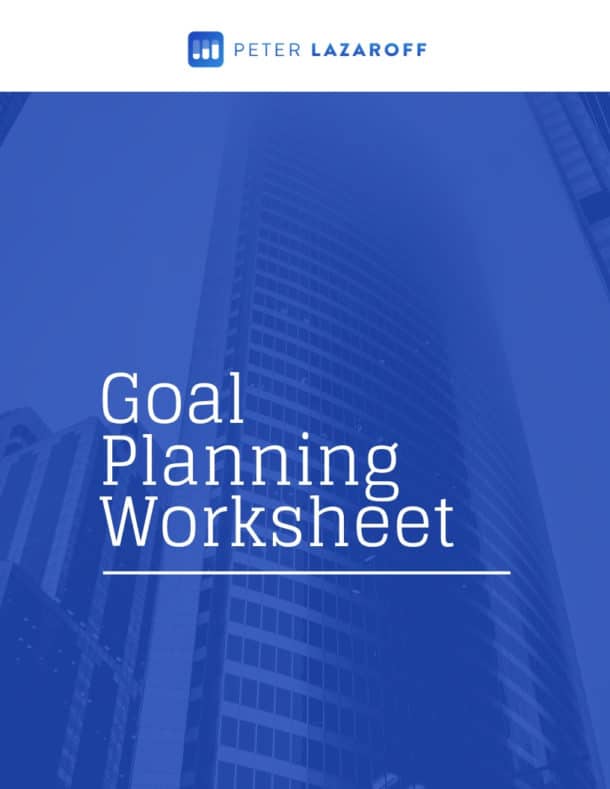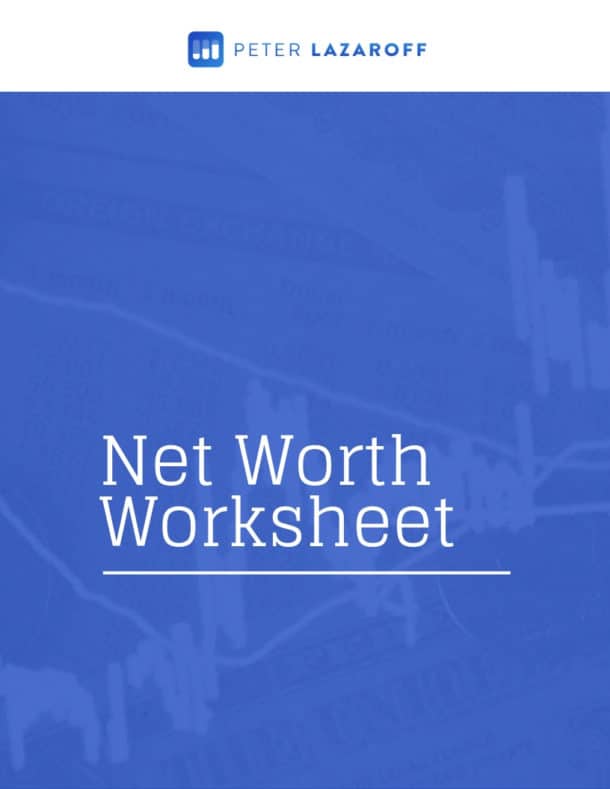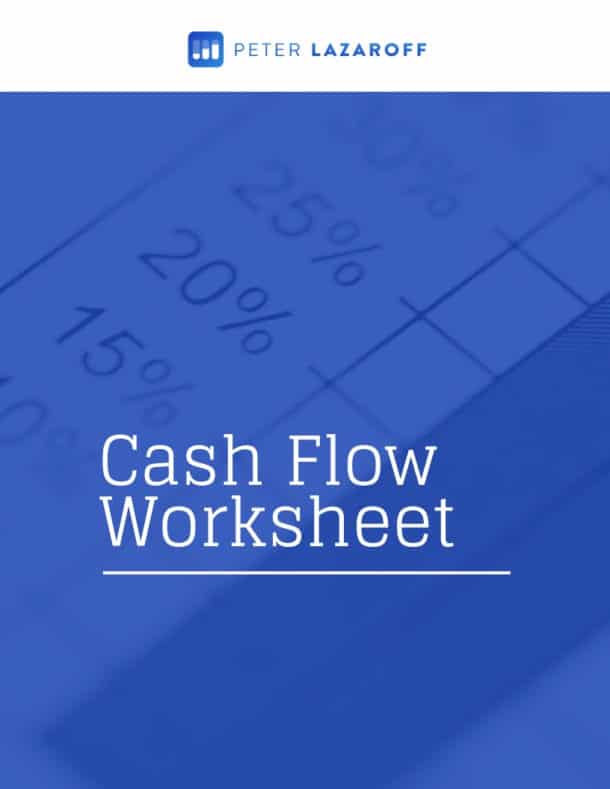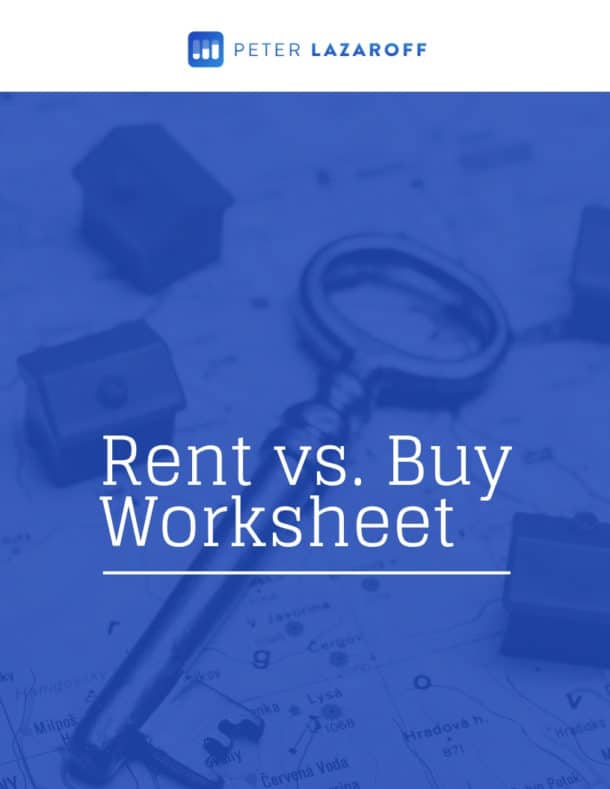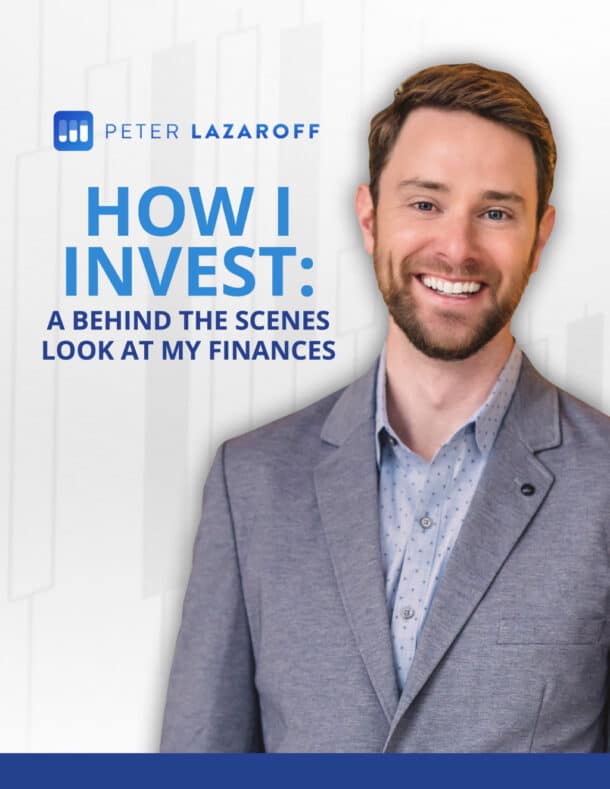Watch Now
Listen Now
In this episode, I’m joined by John Owens, Managing Partner at Brooklyn Fi, to break down year-end planning for people with equity compensation—RSUs, stock options (ISOs/NQSOs), and ESPPs.
We talk about how to avoid AMT surprises, unwind a concentrated stock position, and use 10b5-1 plans and charitable strategies to improve outcomes. If you’ve ever wondered what to prioritize before December 31, this conversation gives you a concrete order of operations.
And if you want help navigating your equity compensation or maybe even diversifying your company stock position in a tax efficient manner, you can schedule a call with me by visiting CallWithPeter.com to learn more about becoming a Plancorp client.
Here are notes from our conversation…
Sign up for my newsletter so you can easily reply to my emails with your thoughts or questions for the podcast:
A Hard-Won Lesson: When AMT Grows Larger Than Your Stock (And What To Do Next) (01:15)
John opens with a real-world scenario many newly public employees faced: early in the year, a client exercised incentive stock options (ISOs) and created an AMT (Alternative Minimum Tax) bill of roughly $50,000. Months later, earnings disappointed, the stock fell 40–60%, and the position was suddenly worth less than the tax bill. What looked smart in February became a problem by November.
The year-end fix: after running the numbers, the client sold shares, eliminated the AMT exposure, and accepted ordinary income in exchange for certainty.
It’s not elegant, but it’s often the most rational choice when valuation has moved against you and the calendar is closing. In newly public names, your risk changes every trading day—which means your tax plan can’t be a set-and-forget document.
How to apply this:
- If you exercised ISOs this year, quantify the bargain element and your potential AMT immediately.
- If your stock has dropped materially, model scenarios where selling now reduces risk—even if it changes the tax character of gains.
- Don’t wait for January; AMT is calculated on the year’s activity.
Don’t Start Equity Planning on December 15 (02:21)
Year-end planning has hard operational cutoffs—custodians, brokerage platforms, company blackout windows, and CPA workloads. By mid-December, the doors close on many actions, and even simple moves (like raising withholding or getting paperwork countersigned) can become impossible.
Practical timeline:
- October–early November: gather documents, inventory transactions, identify quick wins.
- Mid–late November: place trades, adjust withholding, automate 10b5-1, prep charitable gifts.
- Early December: confirm settlements and paperwork are complete; nothing left to “hope” gets done.
If you want a smoother process, aim to be fully executed by early December, not starting then.
First Move: Build An Inventory And Triage The Quick Wins (03:19)
Before choosing strategies, you need a clear picture of what happened this year and what you still control. John’s approach starts with a thorough inventory:
What to capture now:
- Grants, vest schedules, and exercises (dates, prices, number of shares).
- Current holdings by tax lot (basis, holding period, and whether shares are subject to blackout or lock-ups).
- Cash on hand for taxes, plus any open ESPP enrollment windows.
What to decide quickly:
- If RSU withholding looks light (see next section), consider selling shares or increasing withholding/estimated payments to avoid an April surprise.
- If you have long-term ISO shares already past the holding period, weigh trimming now to reduce concentration.
- If an ESPP window is open and you’re eligible, decide whether you’ll participate (and at what percentage).
This is also the moment to surface any year-over-year changes (compensation jump, company going public, job change) and to note the changing tax environment between 2025 and 2026, which can affect timing choices.
AMT 101 For ISO Holders: The “Parallel” Tax You Don’t Want To Pay (06:18)
AMT is a parallel tax system; you pay the higher of your regular tax or AMT. With ISOs, the potential trigger is the bargain element: the fair market value at exercise minus the strike price. Exercise a large block when the stock is high, and you might create a cash tax bill without having sold any shares.
What to track for each ISO exercise:
- Exercise date and strike price.
- FMV on exercise date (the number that drives the bargain element).
- Number of shares exercised and total outlay (strike × shares).
- Your cash plan: do you have enough to pay potential AMT if you can’t sell due to blackout windows or lock-ups?
Planning moves to consider:
- Map your AMT break-even before exercising more ISOs.
- Model smaller, staged exercises to test AMT impact and cash needs.
- If you’ve already tripped AMT and markets moved against you, evaluate selling to neutralize the AMT exposure before year-end.
RSUs: Why 22% Withholding Often Sets Up An April Tax Bill (08:47)
RSUs are taxed at vest, not when you sell. The snag is that the first $1 million of supplemental wage income (where RSUs usually land) is often withheld at 22% federal, while many RSU recipients fall in higher brackets. That mismatch creates a balance due unless you plan ahead.
What to do:
- Estimate your true marginal rate and compare it to 22% withholding.
- If there’s a gap, consider selling a portion of vested shares to fund taxes or raising withholding/estimated payments for the year.
- Track vesting cadence (monthly/quarterly) so you’re not surprised by recurring taxable events.
Remember: taxes are due on the value at vest. Waiting to sell doesn’t change the initial income inclusion—it simply adds market risk on top.
ESPPs: Capture The Discount, Control Concentration (10:24)
ESPPs let employees buy company stock, typically at a discount up to 15%. For people who already have a lot of company exposure (RSUs, options, unvested grants), John often recommends selling ESPP shares as soon as you’re allowed to lock in the discount and reduce concentration.
That sale is usually a disqualifying disposition, meaning some of the gain is ordinary income—and that’s okay if the point is to turn equity into cash.
How to decide:
- If your plan allows immediate sale, the discount is the main benefit—capture it and redeploy the cash.
- If your plan requires a six-month hold, compare risks/benefits of holding a full 12 months for a qualifying disposition.
- Always evaluate ESPP decisions within your total company exposure—not in isolation.
Designing A Rules-Based Sell Plan To Unwind Concentration Risk (12:55)
A rules-based plan helps you move from 80% of investable assets in one stock to something safer—say under 10%—without letting emotions dictate timing. Start with inventory by tax lot, then set a destination and timeline you can live with.
Building blocks of a sell plan:
- Order of sale: begin with higher-basis lots to reduce current taxes, then chip away at low-basis shares over time.
- Cadence: sell on a fixed schedule (e.g., monthly/quarterly) rather than reacting to headlines.
- Constraints: factor in blackout windows, 83(b) elections, lock-ups, and liquidity needs.
- Governance: document the plan (even if not a 10b5-1 yet) so you and your advisor know exactly what happens when.
John’s analogy: standing at the top of the stairs with a laundry basket and toys everywhere—the goal is to get down quickly and safely, not to show off your balance on the way down.
The Base Rates On Single Stocks: Why A Diversification Plan Matters More Than A “Feel” (16:11)
Most investors overestimate their odds in single names. Long-horizon research on U.S. stocks shows that a small minority of companies produce the majority of wealth creation, while many stocks trail cash over their lifetimes. That doesn’t make concentrated bets “wrong,” but it means your portfolio’s success shouldn’t depend on beating the base rates.
Key idea: Taxes matter, but concentration risk is often the bigger threat to long-term outcomes.
A sell plan isn’t about giving up on your company—it’s about protecting your future self.
10b5-1 Plans: Automate Good Behavior and Expand Your Ability to Sell (18:42)
A 10b5-1 plan is a pre-arranged trading plan you set up in an open window with a cooling-off period before trades begin. Once active, it lets you sell automatically—even when you’re otherwise restricted—according to rules you’ve set in advance.
Why it helps:
- Behavioral edge: removes in-the-moment second-guessing (“should we wait for earnings?”).
- Coverage: can enable a monthly or price-trigger cadence, not just quarter-ends.
- Governance: demonstrates a consistent approach that’s easier for compliance and IR to support.
Set-up notes:
- Availability varies by company and employee level.
- Keep it simple—over-engineered triggers can backfire if they rarely hit.
- Revisit when your grant mix or cash needs change.
Charitable Giving With Concentrated Stock: Donor-Advised Funds And Timing Across 2025/2026 (21:31)
For charitably inclined investors, donating appreciated shares to a donor-advised fund (DAF) can reduce taxes and concentration simultaneously.
With rules slated to change in 2026 (introducing a 0.5% of AGI floor before charitable deductions count), 2025 may be a strategic year to front-load several years of giving to your DAF, then make grants to charities over time.
How to approach it:
- Identify low-basis shares for donation.
- Coordinate with your advisor/CPA on amount and timing.
- Use the DAF to separate the tax decision (now) from the grantmaking (later).
If you’re not charitably inclined, this isn’t a must-use lever; consider family gifting or other diversification methods instead.
Family Gifting: UTMAs, Kiddie Tax, Step-Up In Basis, And Multi-Generational Choices (24:11)
Family gifting can be useful, but it’s not a one-size-fits-all answer.
What to weigh:
- Minors’ accounts (UTMA/UGMA): modest income thresholds can pull gains into the kiddie tax quickly; run the economics before you move shares.
- Elder donors with very low basis stock: sometimes holding until death provides a step-up in basis for heirs; gifting earlier may not be the best tax outcome.
- Objectives: are you diversifying a concentrated family position, teaching investing, or funding a near-term goal?
The right choice depends on your tax bracket, time horizon, and estate plan—not just this year’s return.
The Year-End Document Checklist Most People Miss (25:28)
Sloppy records are a common cause of incorrect 1099s, mismatched W-2s, and painful April corrections.
John’s must-haves:
- Option exercise confirmations (especially for private companies—paper counts).
- Year-end pay stub to reconcile equity comp lines against your eventual W-2.
- Monthly/quarterly account statements showing vests, exercises, sales, and withholdings.
- Grant/vesting schedules so everyone’s using the same dates and share counts.
Because payroll, the plan custodian, and HR/Finance all touch the data, errors happen. Your documentation is the backstop.
When To Hire Help (And When Not To) (27:17)
Most people reach out when three things collide: the numbers get big, the complexity spikes, and there’s no bandwidth to keep learning new rules. If you’re asking, “What am I missing?” that’s a hint it’s time.
A note on expertise: Handing a stack of forms to a generalist CPA can work for straightforward W-2 income. Equity comp is niche. You want someone who knows which questions to ask (and which red flags to chase) so small issues don’t become big penalties.
Biggest Year-End Mistakes To Avoid (29:19)
- Late-year ISO exercises: because of blackout windows, a December exercise can effectively force you into an 18–24-month holding period to meet ISO rules—creating more risk than you intended.
- Assuming RSU withholding equals your tax bill: 22% withholding often undershoots higher brackets—plan for the difference.
Riding the company roller coaster without a sell plan: anchoring to old highs and waiting for “one more rally” is a behavior problem, not an investment strategy.
Resources:
- Learn more about John Owens
- Learn more about Brooklyn Fi
- Book A Call With Me: CallWithPeter.com
The Long Term Investor audio is edited by the team at The Podcast Consultant
Submit Your Question For the Podcast
Do you have a financial or investing question you want answered? Submit your question through the “Ask Me Anything” form at the bottom of my podcast page.
Support the Show
Thank you for being a listener to The Long Term Investor Podcast. If you’d like to help spread the word and help other listeners find the show, please click here to leave a review.
I read every single one and appreciate you taking the time to let me know what you think.
Free Financial Assessment
Do you want to make smart decisions with your money? Discover your biggest opportunities in just a few questions with my Financial Wellness Assessment.

Disclosure: This content, which contains security-related opinions and/or information, is provided for informational purposes only and should not be relied upon in any manner as professional advice, or an endorsement of any practices, products or services. There can be no guarantees or assurances that the views expressed here will be applicable for any particular facts or circumstances, and should not be relied upon in any manner. You should consult your own advisers as to legal, business, tax, and other related matters concerning any investment.
The commentary in this “post” (including any related blog, podcasts, videos, and social media) reflects the personal opinions, viewpoints, and analyses of the Plancorp LLC employees providing such comments, and should not be regarded the views of Plancorp LLC. or its respective affiliates or as a description of advisory services provided by Plancorp LLC or performance returns of any Plancorp LLC client.
References to any securities or digital assets, or performance data, are for illustrative purposes only and do not constitute an investment recommendation or offer to provide investment advisory services. Charts and graphs provided within are for informational purposes solely and should not be relied upon when making any investment decision. Past performance is not indicative of future results. The content speaks only as of the date indicated. Any projections, estimates, forecasts, targets, prospects, and/or opinions expressed in these materials are subject to change without notice and may differ or be contrary to opinions expressed by others.
Please see disclosures here.









